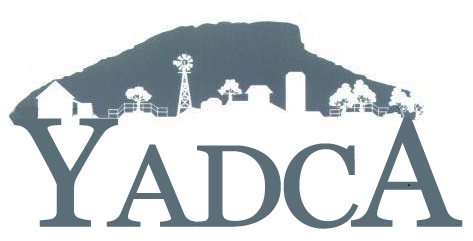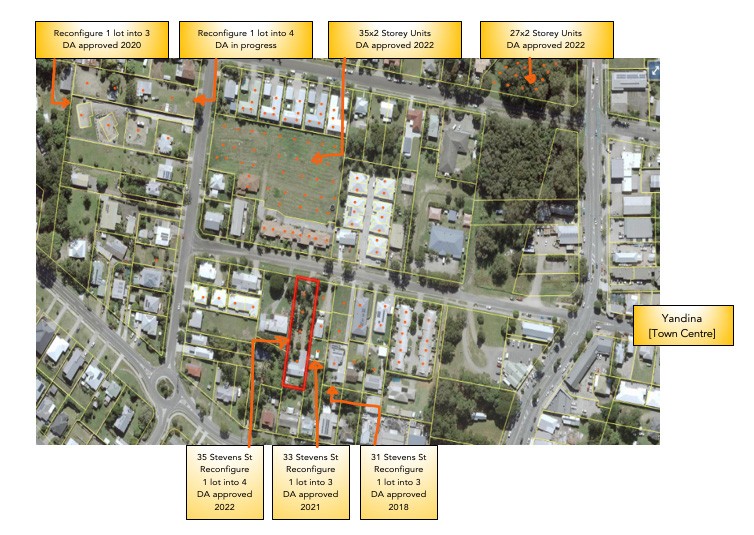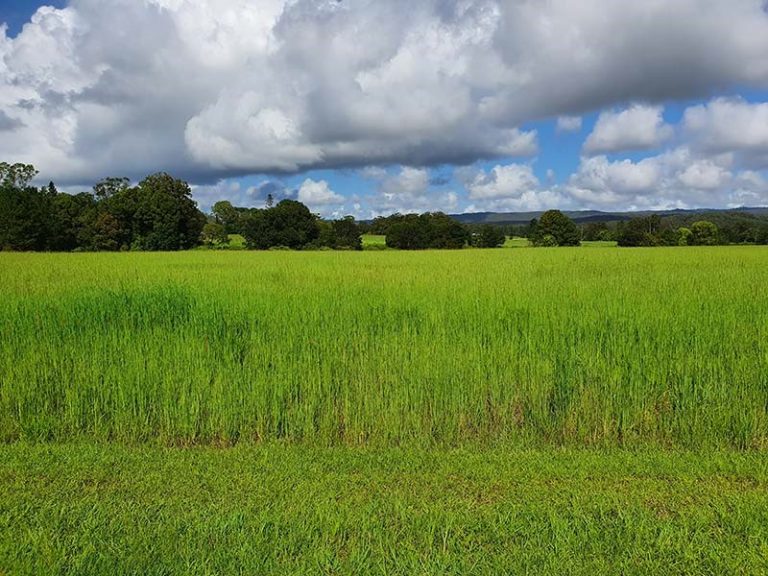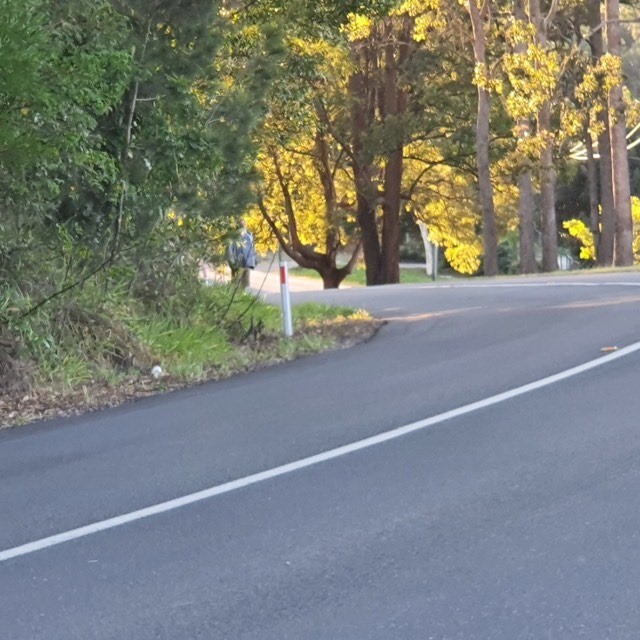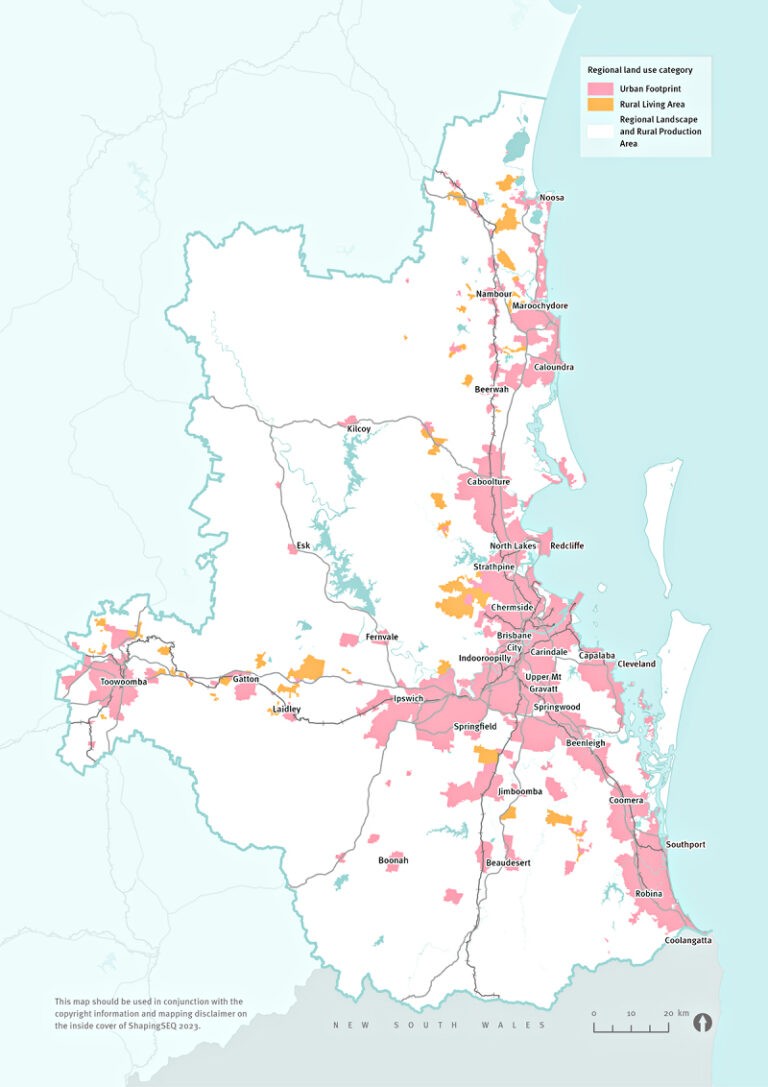More consideration must be given to the importance of mature trees and green spaces in the urban landscape of our regional towns.
At 27 Farrell Street, Yandina, Council has asked the developer to try and retain the mature trees on the portion of the block that will be transferred to Council. Initially the Eastern part of the block was to have a Voluntary Conservation Agreement over it, which would have protected the native vegetation. There is no guarantee now.
As a result of urban infill, large blocks with gardens are being replaced by roofs and concrete driveways with no space for shade trees. These manufactured surfaces increase local temperatures.
The recent approval of a subdivision of 1 block into 4 blocks has given the green light to the developer to remove the garden and tree canopy on one of the few remaining treed blocks in Stevens Street.
This latest approval, in a row of subdivided house blocks, not only heightens flood risk but exacerbates the ‘heat island effect’ for residents in this low set area of Stevens Street. The once leafy street is being turned into a sea of hot tin roofs that, with no space for a shady tree canopy and no elevation to capture summer breezes, will leave new and existing residents with a hotter environment to live in, and air conditioning as the only cooling option.
Our trees, and the shade they provide, are one of our communities most precious assets. They support ecosystems and build resilience against the changing climate and pollution. They enhance community wellbeing, help cool our towns, clean our air and improve the liveability of our streets and neighbourhoods.
Council planners and developers really need to look at how their cumulative actions and decisions are adversely impacting local residents and come up with better climate wise solutions in infill developments. They need to be advancing sustainability and liveability, not destroying it.
